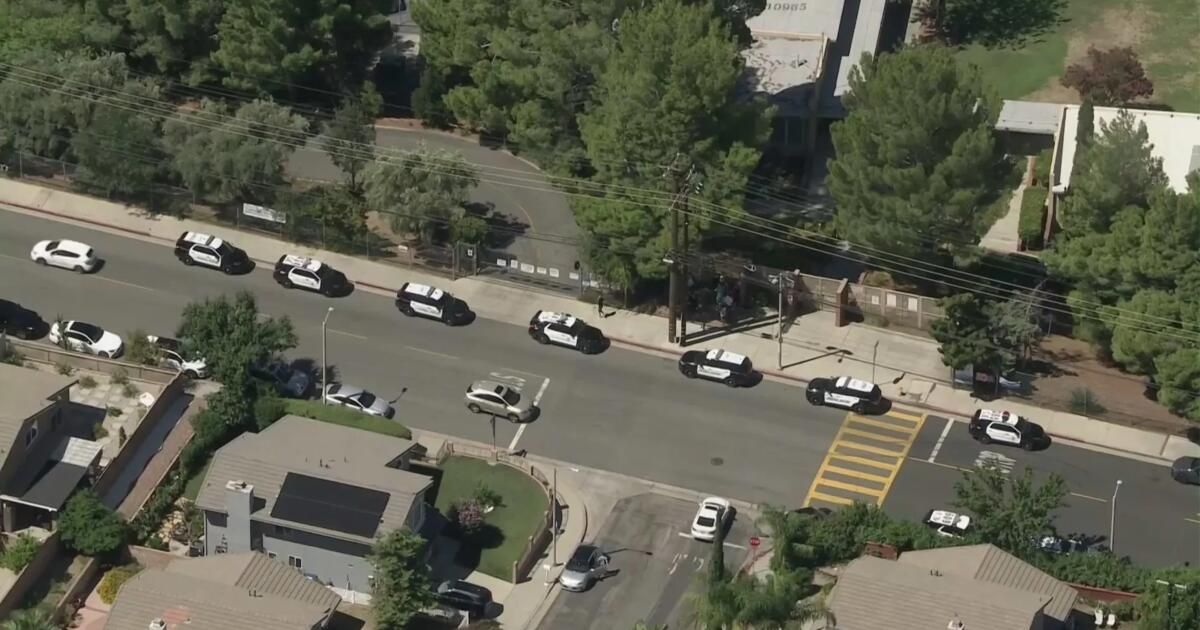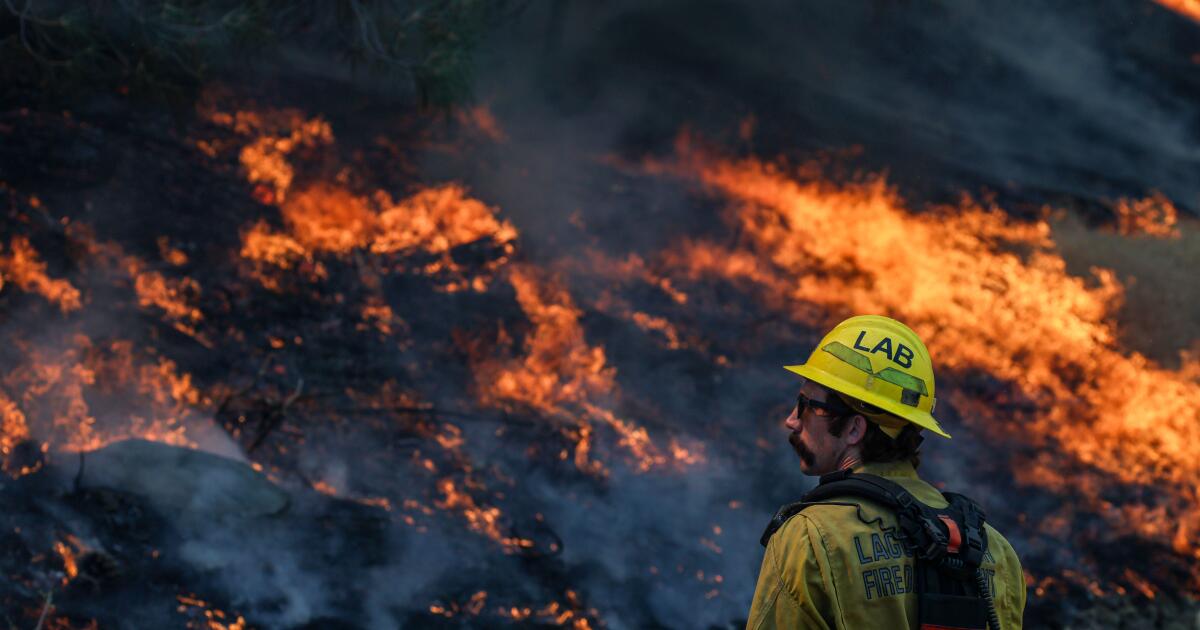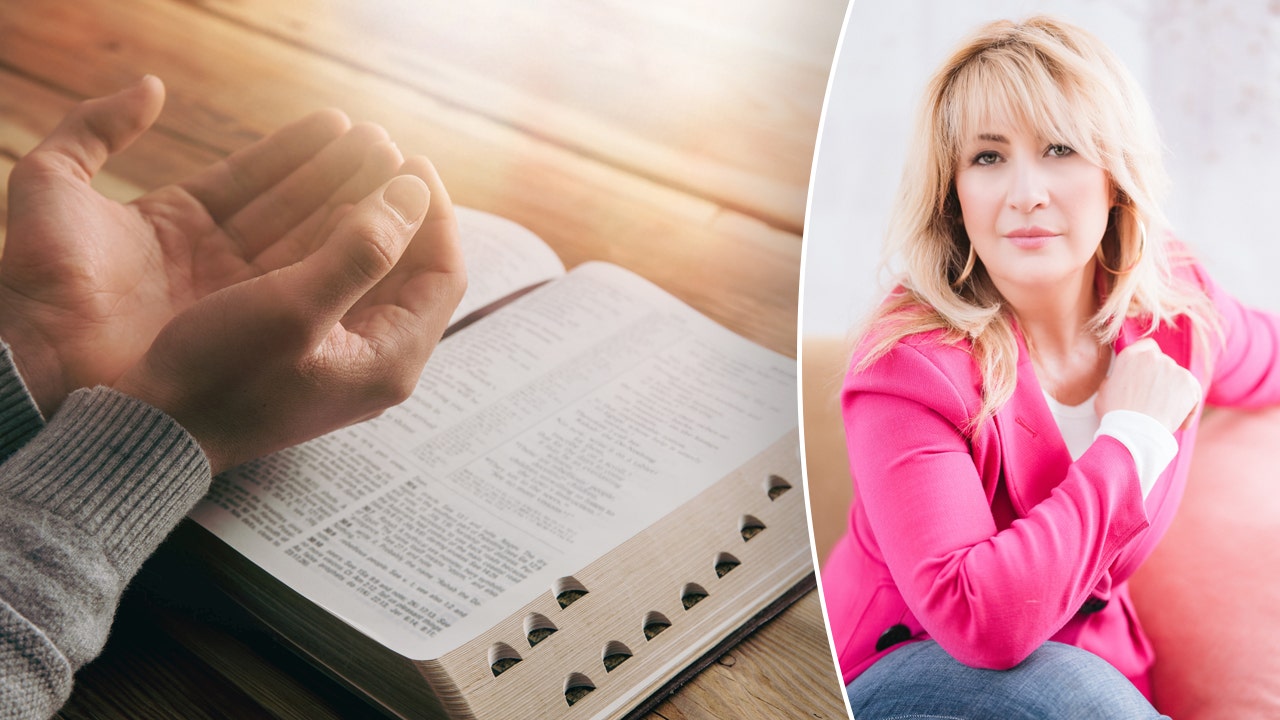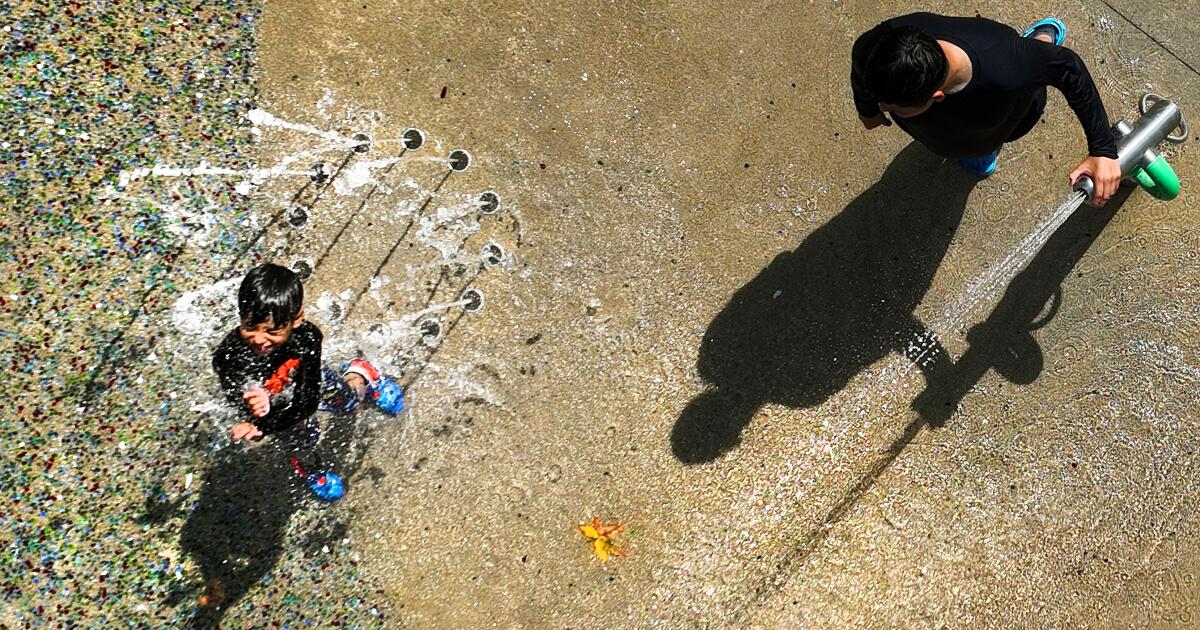Newly released data shows that fights and other types of physical aggression among Los Angeles Unified students are on the rise as the percentage of middle and high school students who said in a survey that they feel safe on campus continues to decline.
Reported incidents of fighting and physical assault rose by just over a third last school year compared with the previous year, from 4,950 to 6,620.
The numbers for the first month of the current school year are about 25% higher compared to last year, rising from 400 to 467. These numbers have also been increasing for several years despite a steady decline in enrollment and a relative increase in school staffing.
The data was released at Thursday’s Board of Education school safety committee meeting along with results from last spring’s School Experience Survey. The survey measures the feelings, experience and perceptions of students, staff members and parents on topics that broadly include academics, social and emotional learning and school climate. Safety-related questions are found in the school climate portion.
For many of the questions, participants had five options: Strongly agree; Agree; Neither agree nor disagree; Disagree; Strongly disagree.
In response to the question “I feel safe at this school or in online school sessions,” 61% of high school students responded “strongly agree” or “agree.” Another 31% neither agreed nor disagreed, and 8% disagreed or strongly disagreed.
While a comparatively small percentage of students said they felt unsafe, that figure was still nearly one in ten. Among the rest of the students, there was not overwhelming support for the safety measures.
“These data are really alarming,” said Tanya Ortiz Franklin, a school board member who chairs the safety committee. “It’s hard to see that things are getting worse over the last few years. Things are harder for our kids and communities. And we know that signs of violence are actually signs of trauma and unmet needs.”
The trend is moving in the wrong direction.
Several questions addressed different aspects of safety and were combined into a single safety metric. In data going back to the 2018-19 school year, the percentage of high school students reporting high overall safety ratings has been slowly declining: 62%, 61%, 69%, 61%, 59%, 58%.
The 69% figure for 2020-21 is an outlier. That was a period of remote learning when campuses were closed for most of the year due to the COVID-19 pandemic. During that time, most Los Angeles Unified students remained off-campus for the entire academic year.
Research has strongly indicated that the remote learning period resulted in academic and emotional setbacks for students in Los Angeles and across the country, but Los Angeles students felt somewhat safer staying home.
As discouraging as the safety numbers are at the high school level, they get worse at the middle school level, where 57 percent of students said they “strongly agree” or “agree” that they felt safe.
In elementary schools—a place where many adults assume students are a relative haven of safety and well-being—76% agreed or strongly agreed that they feel safe at school.
Data on school incidents was pulled from iStar reports, which are an imprecise but useful metric. iStar stands for Incident System Tracking Accountability Report and is an internal district system. It is used to report crimes, fights, threats, vandalism, graffiti, bathroom vaping, suicidal ideation, and more. These reports are typically generated by a school principal. The principal has broad discretion over whether or not to file these incident reports, but can face repercussions if an unreported incident later leads to problems. That knowledge appears to create an incentive for most principals to report incidents.
The information the district provides to the public is another matter. The district has refused to release even redacted iStar reports that hide students' identities or to report summaries related to specific schools.
But officials have provided limited data at the district level, and that is what was presented Thursday.
The overall data from the incident summaries was mixed, but generally pointed in the wrong direction. Last year, students expressing thoughts related to suicide decreased slightly, but this year they are increasing.
Last year, the number of guns found decreased slightly from 1,362 to 1,276. They ranged from an Exacto knife to a loaded semi-automatic firearm. At least four loaded or unloaded guns were confiscated in the first month of the school year. At least two were semi-automatic weapons.
On Friday, district insiders said a semi-automatic handgun was found at Bell Middle School, equipped with a loaded and illegal magazine. District officials did not elaborate, but said a search of a student after an “altercation” led to the discovery of a student “in possession of a firearm.”
The latest statistics also include incidents involving illegal or controlled substances, which continue to increase, as do incidents involving threats.
In addition to data, the safety committee agenda included what the district is doing to make schools safer, and there are many initiatives underway. Thursday’s discussion focused almost exclusively on programs related to counseling, as opposed to surveillance initiatives or steps taken to address threats to a school from off campus.
The Los Angeles School Police Department is not represented on the safety committee. Under board rules, the seven-member school board can have up to three of its members on a particular committee. The safety committee is chaired by Franklin and includes school board President Jackie Goldberg and board member Rocio Rivas, who have spoken in favor of placing strict limits on the role of school police. Franklin has consistently advocated for eliminating school police altogether, while asserting that data should be released to the public.
The district’s preferred approach to student discipline involves supporting positive behavior and “restorative practices,” through which students take responsibility for their actions and learn to make amends.
Public speakers mentioned the role of school police. Channing Martinez of the Labor Community Strategy Center, a local organization, said restorative practices could not be fully effective as long as the district continued to embrace what he characterized as racist practices, including funding a school police department.
On the other hand, several parents called for reinstatement of cuts to school police and officers returning to middle and high schools. A slim majority of the board voted in 2020 to remove school police from campuses and drastically reduce the department's budget.
“We’re seeing in the data that there’s been an increase in fights,” said Diana Guillen, a parent who holds volunteer leadership positions on district advisory groups. “So what are they going to do about it? Their program is failing.”
Goldberg wanted to know why students feel unsafe.
“Ask them, ‘What makes you feel safe? ’ That would be a nice tip because we have some kids who feel safe around police and some who don’t,” Goldberg said.
Goldberg also questioned the effectiveness of restorative practices, though she strongly supports the concept. She said that at most a handful of schools in her district are carrying out these practices effectively.
Andres Chait, chief of school operations, acknowledged the problem when answering questions. He said restorative practices, while still imperfect, peaked before the pandemic and then lost momentum. The district is still trying to catch up, he said.
But she also highlighted positive signs, including the nearly 800 psychiatric social workers, the most the district has ever employed, she said. The district is also expanding partnerships with private and public entities, Chait said. Working with the city of Los Angeles, there are now more crossing guards than ever, for example, providing an adult presence on the way to and from campus.
The security problem extends to the neighborhoods around schools, where, according to survey results, students said they feel less safe than on campus.
Surveys are also conducted for parents and school staff.
About 78% of parents agreed that their children are safe on school grounds in middle and high schools. The figure was 90% for elementary schools.
Among school employees, about 9 in 10 agreed with the statement that they felt safe on their middle or high school campus. The figure was 96% for elementary schools.
For middle and high schools, about 8 in 10 employees agreed that they felt safe “in the neighborhood around my school.” The figure was 85 percent for elementary schools.
The district said the participation rate was 94% for students, 97% for staff and 58% for parents. The survey was conducted primarily online, although some paper forms were distributed at campuses for parents to use. The survey was conducted from Feb. 12 to March 22.












